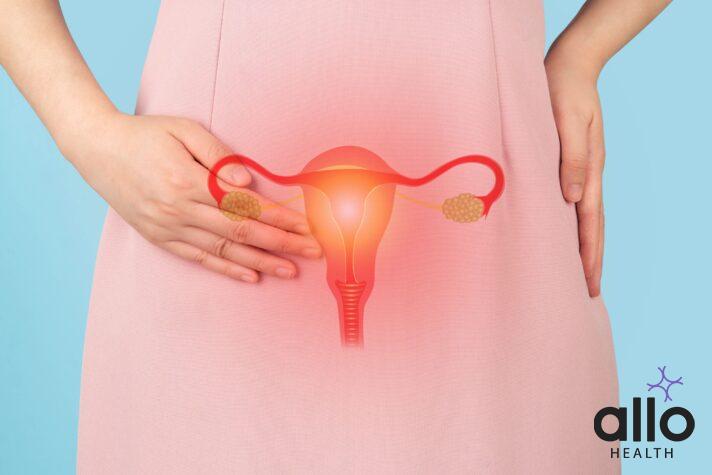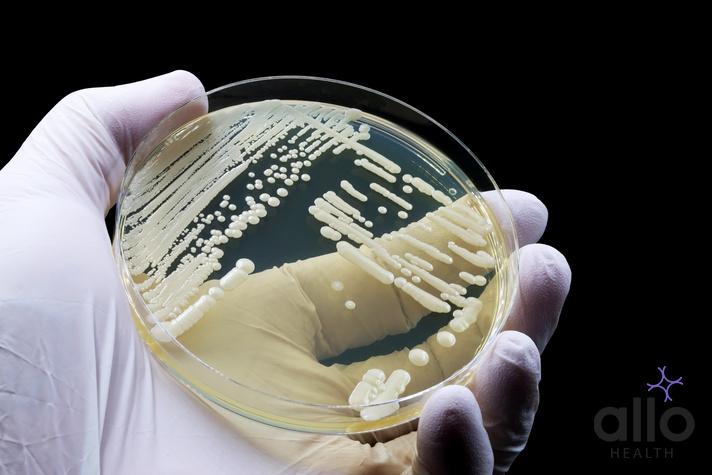How Is Candidiasis (Yeast Infection) Diagnosed?

Allo Health is dedicated to personalized well-being, offering support and trusted information tailored to individual health goals. The platform emphasizes human-generated content, led by a distinguished medical team of experts, including physicians and sexual health specialists. Their commitment to credibility involves rigorous fact-checking, authoritative research, and continuous updates to ensure accurate, up-to-date information. Allo Health's unique approach goes beyond conventional platforms, providing expert-led insights and a continuous commitment to excellence, with user feedback playing a crucial role in shaping the platform's authoritative voice.

Dr Thanushree, has her MBBS from Kanachur Institute of Medical Sciences, Mangalore
Why This Was Upated?
Our experts continually monitor the health and wellness space, and we update our articles when new information became available.
Updated on 26 February, 2025
- Article was updated as part of our commitment to diversity, equity, and inclusion.
"The following blog article provides general information and insights on various topics. However, it is important to note that the information presented is not intended as professional advice in any specific field or area. The content of this blog is for general educational and informational purposes only.
Book consultation
The content should not be interpreted as endorsement, recommendation, or guarantee of any product, service, or information mentioned. Readers are solely responsible for the decisions and actions they take based on the information provided in this blog. It is essential to exercise individual judgment, critical thinking, and personal responsibility when applying or implementing any information or suggestions discussed in the blog."
Candidiasis, commonly referred to as a yeast infection, is a fungal infection caused by the overgrowth of Candida species, primarily Candida albicans. Diagnosing Candidiasis involves a combination of medical history review, physical examination, and laboratory tests to confirm the presence of Candida organisms and determine the appropriate treatment approach. In this detailed article, we will explore the various methods used to diagnose Candidiasis, shedding light on the diagnostic process and its significance in managing this common fungal infection.
Clinical Assessment: Gathering Medical History and Symptoms
The diagnostic process for Candidiasis typically begins with a comprehensive clinical assessment, which involves gathering the patient’s medical history and evaluating their symptoms. The healthcare provider will inquire about the presence and duration of symptoms such as itching, burning, irritation, discharge, or discomfort in the affected area, which can vary depending on the type and location of the infection. Details about any underlying medical conditions, recent antibiotic use, hormonal changes, or other potential risk factors for Candidiasis will also be reviewed to better understand the patient’s clinical presentation.

Physical Examination: Inspecting the Affected Area
A thorough physical examination is essential for identifying characteristic signs of Candidiasis and assessing the extent of the infection. Depending on the suspected site of infection (e.g., genital area, mouth, skin folds), the healthcare provider will visually inspect the affected area for specific indicators of Candidiasis, such as:
- In the case of genital yeast infections, the healthcare provider may observe redness, swelling, and irritation of the vulva or penis, along with the presence of abnormal vaginal discharge in women.
- Oral thrush may manifest as white, creamy patches on the tongue, inner cheeks, gums, or throat, which can be easily identified during a mouth examination.
- Skin infections may present as red, inflamed patches with well-defined borders, often accompanied by itching, burning, or peeling of the skin, particularly in skin folds or moist areas.
Microscopic Examination: Detecting Candida Organisms
Microscopic examination of clinical samples is a valuable diagnostic tool for detecting the presence of Candida organisms. Samples of tissue, discharge, or fluid from the affected area may be collected using swabs or other collection devices and examined under a microscope for the presence of yeast cells, pseudohyphae (elongated budding structures), or hyphae (filamentous structures) characteristic of Candida species. Microscopic examination allows for rapid detection of Candida organisms and provides preliminary diagnostic information to guide further testing and treatment decisions.
Culture Test: Growing Candida Organisms in the Laboratory
In cases where microscopic examination yields inconclusive results or when additional confirmation is needed, a culture test may be performed to grow Candida organisms in a laboratory setting. Clinical samples collected from the affected area, such as swabs or tissue biopsies, are plated on specific culture media optimized for fungal growth. The plates are then incubated at appropriate temperatures to promote the growth of Candida species. After incubation, the colonies of Candida organisms are identified based on their morphology, growth characteristics, and biochemical properties. Additionally, susceptibility testing may be performed to determine the sensitivity of the isolated Candida strains to antifungal medications, guiding treatment selection.

Molecular Diagnostic Techniques: Identifying Candida Species
Advancements in molecular diagnostic techniques have expanded the diagnostic capabilities for Candidiasis by enabling the rapid and accurate identification of Candida species. Polymerase chain reaction (PCR) assays, nucleic acid amplification tests (NAATs), and DNA sequencing methods can detect and identify Candida DNA in clinical samples with high sensitivity and specificity. These molecular assays can differentiate between different Candida species and detect antifungal resistance markers, providing valuable information for targeted treatment strategies. Molecular diagnostic techniques are particularly useful in cases where traditional culture methods may be time-consuming or less sensitive, such as in systemic Candidiasis or infections caused by non-albicans Candida species.
Differential Diagnosis: Distinguishing Candidiasis from Other Conditions
In addition to confirming the presence of Candida organisms, the diagnostic process for Candidiasis involves distinguishing it from other infections or conditions with similar symptoms. Differential diagnosis may include bacterial infections, sexually transmitted infections (STIs), dermatological conditions, or inflammatory disorders. A thorough evaluation of the patient’s clinical presentation, combined with appropriate laboratory tests and imaging studies if necessary, helps rule out alternative diagnoses and ensures accurate identification of Candidiasis.
Collaborative Approach: Involving Healthcare Specialists
The diagnosis of Candidiasis often involves a collaborative approach between healthcare specialists, including primary care physicians, gynecologists, dermatologists, infectious disease specialists, and microbiologists. Depending on the suspected site of infection and the patient’s medical history, consultations with relevant specialists may be warranted to ensure comprehensive evaluation and management. By leveraging the expertise of multiple healthcare professionals, patients can receive individualized care tailored to their specific needs and circumstances.
The diagnosis of Candidiasis requires a systematic approach that incorporates clinical assessment, physical examination, and laboratory testing to confirm the presence of Candida organisms and guide treatment decisions. By employing a combination of microscopic examination, culture tests, molecular diagnostic techniques, and collaborative consultation with healthcare specialists, clinicians can accurately identify Candidiasis and differentiate it from other conditions with similar presentations. Early and accurate diagnosis of Candidiasis is crucial for initiating timely treatment, preventing complications, and promoting patient recovery. As our understanding of Candidiasis continues to evolve, ongoing research and technological advancements will further enhance diagnostic capabilities, ultimately improving patient care and outcomes.








































